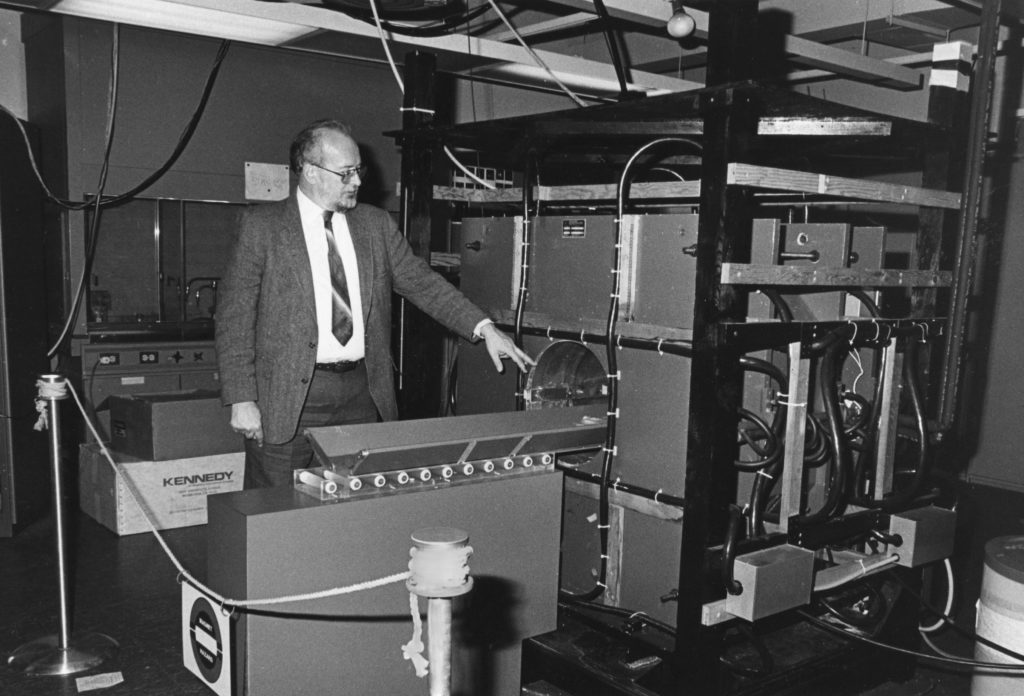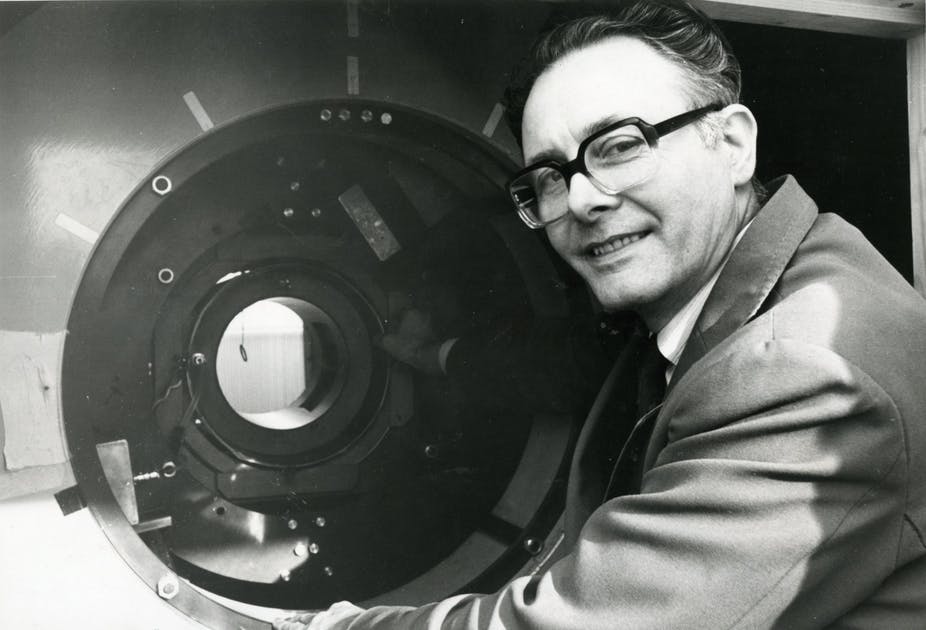How Patents Took Center Stage in the Battle for a Nobel Prize in MRI
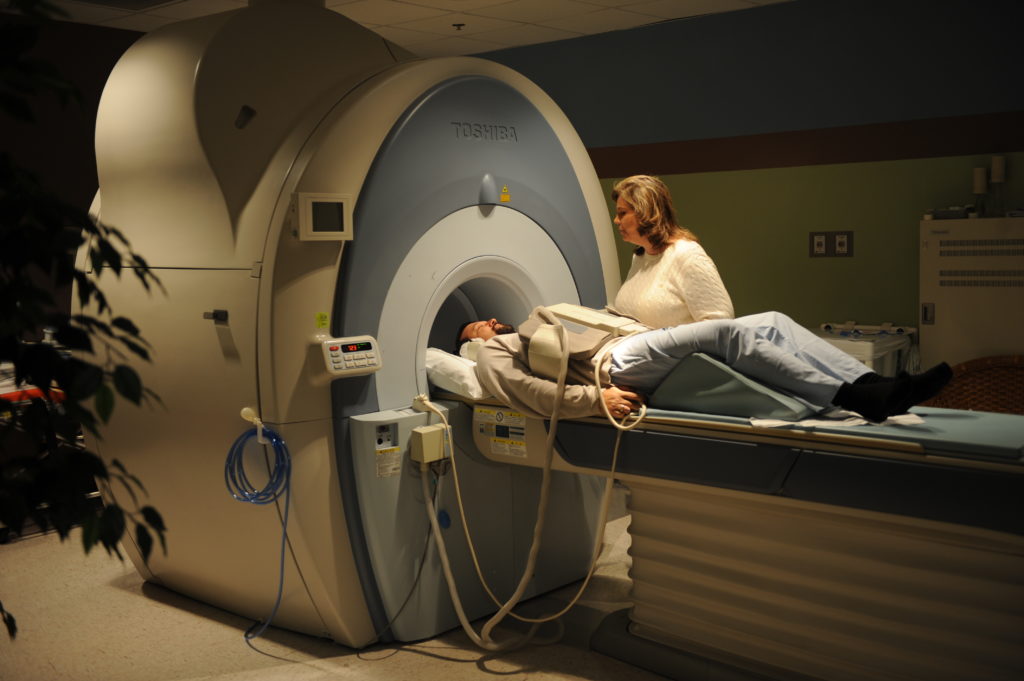
Using a powerful magnetic field to safely photograph the inside of the human body and help with cancer detection is arguably one of the greatest achievements in human medicine. It’s also a major source of controversy when considering the invention of the MRI, the patents that supported it, and the Nobel Prize accorded to two inventors around the turn of this century.
When Paul Lauterbur and Peter Mansfield achieved Nobel Laureate status in Physiology and Medicine in 2003 for the discovery of MRI, it triggered an uproar from another inventor Raymond V. Damadian who some believe should have received some recognition for the role he played in its prior development.
Raymond V. Damadian
Damadian had some early success during the 1970s in formulating magnetic resonance techniques and machines which he carefully protected through the use of strategic patents. He used patents to fend off infringements from giants in the sector including General Electric, Hitachi and Siemens. In particular, General Electric was ordered to pay his company nearly $130 million for infringing patents. This was not an isolated case and other big companies settled, too.
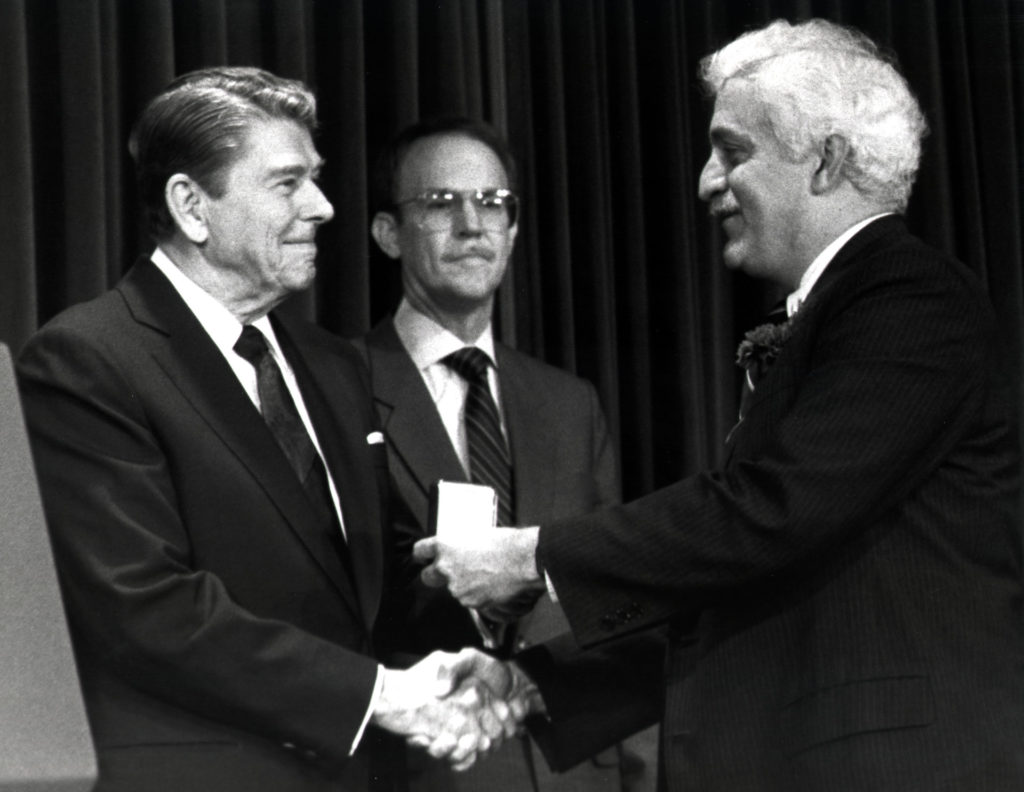
Raymond V. Damadian patented his method for using nuclear magnetic resonance, used for analyzing chemicals in test tubes, to detect cancers in the human body. He was denied the Noble Prize in Medicine for his work.
”With their marketing and financing strength, big companies don’t need to risk doing things first. ‘For entrepreneurs to keep taking risks, they need temporary exclusive rights to their inventions,” he said.
Damadian’s apparatus essentially distinguished cancerous material from healthy tissues by analyzing the water inside a cell. The healthy tissues, he argued, showed pronounced differences in relaxation times which could be measured using MRI.
Paul Lauterbur
Meanwhile Lauterbur was also also building on the pioneering work of Block and Purcell, who won Nobel Prizes for nuclear magnetic resonance in the 1950s. Along with Mansfield he focused on spatial information and two-dimensional models – what many call “Gradient Fields” – to capture accurate pictures inside the human body.
Yet unlike Damadian, he failed to secure patent and commercialize his work. This was largely because his University decided not to pursue patent applications based on his research since advisors felt the commercial returns would not cover the costs of the filing with The United States Patent Office. It would take Lauterbur another decade to get funding for his projects.
Peter Mansfield
Meanwhile, Peter Mansfield working independently of Lauterbur, had discovered that in a magnetic field gradient the resonance frequency would accompany its position leading to a generated image.
He showed how the signals could be mathematically analysed, which made it possible to develop a useful imaging technique. Fortunately for Mansfield, The British Technology Group (BTG) which oversaw Intellectual Property of both government and university research in the UK, sagely filed patents to protect his work.
This was a critical step since it allowed them to file patent infringements against a major U.S. company which was manufacturing MRI equipment. In addition to securing licensing income, the patents ensured that Mansfield was forever associated with the invention.
In awarding the Nobel Prize to Lauterbur and Mansfield, the committee said “this year’s Nobel Laureates made pioneering contributions, which later led to the applications of magnetic resonance in medical imaging”.
Ad Blitz
Damadian, who up to this point had been sparring with Lauterbur over who was the true inventor of MRI, immediately retaliated by running a full-page advertisements in both The Washington Post and The New York Times with the headline ”The Shameful Wrong That Must Be Righted,” claiming the prize was an attempt to rewrite history.
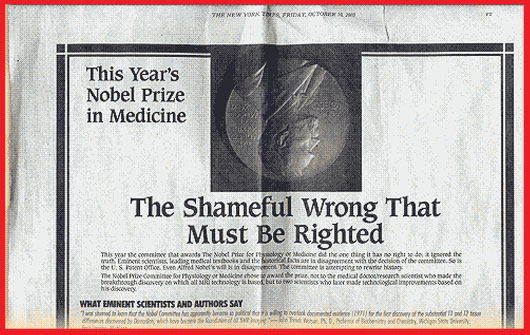
While Damadian did have his defenders, the weight of history sided with Lauterbur and Mansfield.
The Role of Patents
Looking back at this controversial era, it’s clear patents played a key role in opening up commercial success for the medical inventors and holding off patent infringers, both from within and outside a country’s border. While Damadian’s patent ultimately did not help secure him the Nobel Laureate, it did however cement his credentials as a major contributor to the creation of MRI and allowed him to benefit financially. Likewise, Mansfield secured both commercial licensing fees and the ultimate award in medicine, a Nobel Prize.
His fellow Nobel Laureate, Lauterbur had a more difficult path to commercial success, largely because his University failed to patent his idea. However, much later, the University of Nottingham later pursued patents on his behalf which would bring him great financial rewards.
The final analysis shows that medical inventors are in a much stronger position to gain commercial success with a patent, than without it. This includes winning financial compensation for patent infringements from much larger companies in a particular industry.
Finally, it may also conceivably play a role in swaying public opinion in their favor when pursuing the greatest of all accolades, The Nobel Prize.
https://www.medicaldevicepatentattorneys.com/2018/02/how-patents-took-center-stage-in-the-battle-for-a-nobel-prize-in-mri/trackback/
